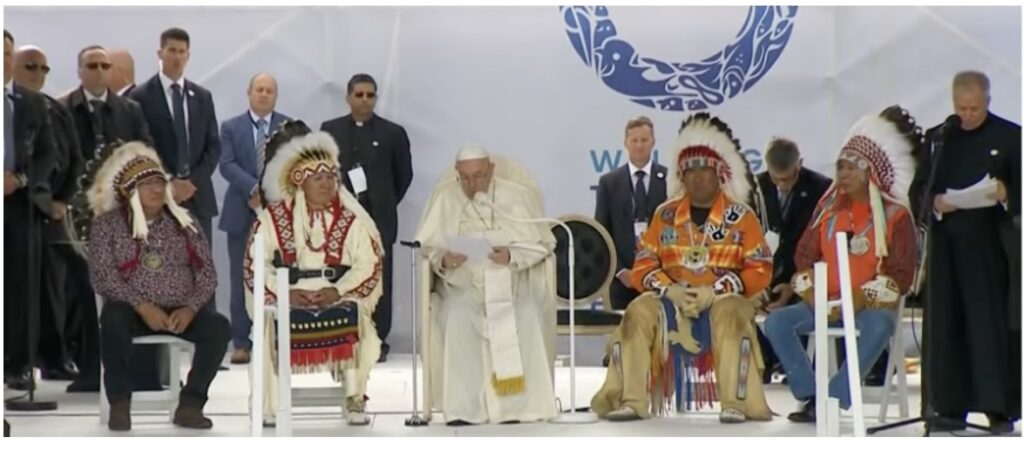 By Neenah Payne
By Neenah Payne
Pope Francis Repudiates Doctrine of Discovery explains that Native Americans had been asking popes to denounce the Doctrine of Discovery since 1992, but they had failed to do so, although many Protestant sects took that step. Pope Francis finally repudiated the doctrine on March 30, 2023 after he had visited Canada and Native American delegations had met with him at the Vatican last year!
The repudiation of the Doctrine of Discovery will eventually have major consequences for US law since the Doctrine is the sole basis of land claims in the US – as well as in Canada, Australia, New Zealand and even parts of India! Non-indigenous peoples must now recognize they are living on indigenous lands. Diane Meredith, Co-Coordinator of MCC Canada’s Indigenous Neighbors Program points out that the next step is to remove the Doctrine of Discovery from Canadian law and to work to change the Canadian worldview.
This article links to some of the responses to Pope Francis’ repudiation of the Doctrine of Discovery. Native Americans see it as a welcome but disappointing first step and are calling on the Pope for more concrete actions.
Mark Charles is a speaker, writer, and consultant. The son of an American woman of Dutch heritage and a Navajo man, Mark teaches the complexities of American history regarding race, culture, and Christendom to help forge a path of healing and conciliation for the nation. In 2012, Mark hosted a public reading at the US Capitol of the buried apology to Native peoples in the 2010 Department of Defense Appropriations Bill given by the 111th Congress.
Charles is the co-author of Unsettling Truths: The Ongoing, Dehumanizing Legacy of the Doctrine of Discovery and authors the blog Reflections from the Hogan. He has served on the boards of the Christian Reformed Church of North America and the Christian Community Development Association. In 2020, Mark ran as an independent candidate for the presidency of the United States, advocating for a Truth and Conciliation Commission – a formal national dialogue on issues of race, gender, and class.
Mark Charles
In the video Mark Charles – The spiritual price of the Doctrine of Discovery, Charles says:
Throughout his ministry, Jesus was adamant that his kingdom was not of this world. He responded sharply whenever his disciples tried to mix his teachings with worldly power. But, in the 4th century the heresy of Christian Empire prevailed. This plenary session examines the deep spiritual cost of rejecting the teachings of Jesus that was necessary in order to create a dehumanizing doctrine of discovery.
A Native Perspective on the Buried History of America
Most people are unaware that the Declaration of Independence, 30 lines below the statement “all men are created equal” refers to the Native Americans as “merciless Indian savages.” Mark Charles is a dynamic and thought-provoking public speaker, writer, and consultant.
The son of an American woman (of Dutch heritage) and a Navajo man, he speaks with insight into the complexities of American history regarding race, culture, and religion in order to help forge a path of healing and conciliation for the nation. Mark is currently working to bring about a national dialogue on race, specifically regarding the Doctrine of Discovery and its influence on the very foundations of our nation; including the Declaration of Independence, the Constitution, and the United States Supreme Court.
Responses to Pope Francis
Steven T. Newcomb (Shawnee, Lenape) is the co-founder and co-director of the Indigenous Law Institute, along with Birgil Kills Straight who is an Oglala Lakota headman and ceremonial person. Newcomb is author of Pagans in the Promised Land: Decoding the Doctrine of Christian Discovery and co-producer of the documentary film, The Doctrine of Discovery: Unmasking the Domination Code, directed by Sheldon Wolfchild (Dakota).
Newcomb is one of the world’s foremost authorities on the Doctrine of Discovery based on the 40 years he has spent investigating and writing about these issues. He has been a tireless advocate for Indigenous nations and peoples for decades and his work has now become a global movement.
In response to the Pope’s March 30, 2023 repudiation of the Papal Bulls underlying the Doctrine of Discovery, Newcomb called on the Pope on May 3 to revoke the Papal Bulls. Mark Charles and others also called on the Pope to do more. Excerpts from their responses are shown below.
Newcomb does a very deep analysis of the statement issued by Pope Francis and shows its many flaws as in the example below.
“Point 3 of the Vatican statement says: “[R]espect for the facts of history demands an acknowledgment of the human weakness and failings of Christ’s disciples in every generation. Many Christians have committed evil acts against indigenous peoples for which recent Popes have asked forgiveness on numerous occasions.” The category “Christ’s disciples” includes the popes who called for the domination of non-Christian Indigenous nations and peoples. It is a massive trivialization to say that the language directing Christian monarchs to establish domination over non-Christians is merely evidence of “human weakness” and “failings.”
The degree of denial exhibited in the Vatican’s March 30th statement does not signal a willingness to be explicit about the consequences of the “colonizing mentality” that the Vatican now says needs to be “abandoned.”
The Vatican Statement goes on to say: “It is in this context of listening to indigenous peoples that the Church has heard the importance of addressing the concept referred to as the doctrine of discovery.”
As noted above, since 1992 the Indigenous Law Institute has communicated with priests, bishops, archbishops, cardinals, and with three popes by letter, and with Pope Francis in person, about the idea-patterns and behavioral patterns of domination created by the papal bulls of the fifteenth century. But the Vatican has failed to take seriously and explicitly acknowledge the central and crucial aspect of our analysis. The Vatican claims their statement is an effort to “walk with” indigenous peoples “side by side,” in “mutual respect and dialogue.” Yet the Vatican has declined to adopt Steven Newcomb’s well-documented terminology of domination in its March 30 statement even one time….
How much land of our original nations does the Vatican currently hold as “property” throughout the Western Hemisphere? Every acre [or hectare] of land in the Western hemisphere that is in the possession of the Vatican and the Catholic Church is a result of the papal decrees of the fifteenth century that we are talking about here. If the Vatican is sincere, let’s talk about its land holdings, how the church got ahold of all that land of Indigenous nations and peoples, and how much of their claim of a right of domination they are willing to pull back.
We at the ILI, in solidarity with Original Nations and Peoples, will continue to call upon the Holy See to not simply “renounce” the “doctrine” inherent in the papal bulls, but to revoke the papal bulls themselves. We do this as part of our effort to publicize and challenge the patterns of domination globally and to challenge the patterns of domination expressed in the Johnson v. McIntosh ruling and in other legal decisions that are based on Johnson into the 21st century.
CRFP: Indigenous Peoples express hope and concern at Vatican’s repudiation of Doctrine of Discovery 4/27/23
“The following is a press statement by the Cross Rhodes Freedom Project, signed by several local NGOs and civil social organisations, in response to Pope Francis’ repudiation of the Vatican’s infamous Doctrine of Discovery:
On 30 March, the Vatican announced it had “repudiated” the Doctrine of Discovery, an international legal principle and moral framework derived from a series of 15th and 16th century papal decrees, or bulls, which called for non-Christian peoples to be invaded, captured, vanquished, subdued, reduced to perpetual slavery and have their possessions and property seized—starting in Africa in the 1400s.
The decision came after decades of demands by Indigenous peoples across the Americas, including those in Trinidad and Tobago, to rescind the bulls Dum Diversas (1452), Romanus Pontifex (1455) and Inter Caetera (1493) among others, which provided the basis of agreements between competing European nations for land not yet inhabited by them, identifying such lands as free to be “discovered”.
Demands reached their peak last year when Pope Francis visited Canada to apologise to Indigenous communities who had burnt and vandalized dozens of churches in protest over the Vatican’s role in the country’s notorious, residential school system (1880’s to 1990’s) in which thousands of Indigenous children were physically and sexually abused, and in some cases, killed and buried in unmarked graves which are still being found….
Pope Francis is quoted as saying: “Never again can the Christian community allow itself to be infected by the idea that one culture is superior to others, or that it is legitimate to employ ways of coercing others.”
Civil society in Trinidad and Tobago joins Indigenous peoples across the world in welcoming this historic development, but also in expressing reservations. Mark Charles, a Navajo Christian pastor and author, described the statement as a “missed opportunity”. Charles took issue with the Vatican’s claim that the papal bulls were “manipulated for political purposes by competing colonial powers,” and that, the papal decrees “have never been considered expressions of the Catholic faith”.
“In what could have been a ground-breaking and historic repudiation of the Doctrine of Discovery, the Vatican instead released a series of political statements that sought to rewrite history, shield the Catholic Church from legal liability and shift the blame for the Doctrine of Discovery to governmental and colonial powers,” said Charles. “If you truly see yourself as a representative of Christ to this world, you absolutely […] need to do better.”
Philip P Arnold, a professor of religious studies at Syracuse University and the founding director of Skä·noñh — Great Law of Peace Center, was interviewed on the Emancipation Support Committee’s radio show Indaba, on Wednesday 12 April, along with his wife Sandy Bigtree. Their position is that: “the Vatican’s statement reads in part like an attempt at damage control” and that it, “falls short of the kind of full accountability required to heal past wounds”. Additionally, they argue that it does not compare favourably with other Christian repudiations: the Episcopalians 2009, the World Council of Churches 2012, and myriad other Roman Catholic bodies throughout the 2000s.
The Vatican has taken the position over many years that it does not need to rescind the notorious bulls that underpin the Doctrine as they have been “abrogated” by Sublimis Deus (Devine God)—a 1537 bull which declared that, “the said Indians and all other people who may later be discovered by Christians, are by no means to be deprived of their liberty or the possession of their property, even though they be outside the Christian faith.”
This position was reiterated in the latest statement.
Philip and Sandy described this argument as “an attempt to hide behind a wall of Papal obfuscation”.
The Caribbean Freedom Project and the undersigned Civil Society organisations in Trinidad and Tobago applaud the Church’s call for the abandonment of the “colonising mentality” and for its solidarity with indigenous peoples, but agree with Grand Chief Stewart Phillip, president of the Union of British Columbia Indian Chiefs, who says the Vatican needs to do more:
“The formal repudiation comes without reparations or tangible actions to account for the systemic violence, destruction of land and culture, and genocide which were propagated by this deadly weapon of colonisation.”
We also share the sentiments of the National Congress of American Indians, the oldest and largest organization representing Indigenous peoples in the United States, which expressed hope that this denunciation of the Doctrine would be the beginning of a full accounting for the legacies of colonialism—not only from the church, but also from governments that used it to justify the mistreatment and disrespect of Indigenous peoples.
Finally we support the view of the Shaman of the Warrao People of San Fernando Raould, Keith Simon, who believes that “our perceptions and treatment of Indigenous peoples are still influenced by the Doctrine of Discovery” and that there needs to be local action to give fuller meaning to the repudiation.
Simon is calling for the immediate removal of all statues of Christopher Columbus, “the ultimate symbol of the Doctrine,” and for the removal of the three ships from the country’s Coat of Arms, which is in effect a, “celebration of his invasion and genocidal occupation of the Caribbean.”
The following graphic is from Steve Newcomb’s site ORIGINAL FREE NATIONS – CUTTING-EDGE
RESEARCH FOR INDIGENOUS PEOPLES’ LIBERATION
This “Original Free Nations Anthem” is dedicated to Standing Rock and their supporters, as well as our ancestors and “All Our Relations.” Our video “Original Free Nations” (two minutes and forty-five seconds) is a tribute to Standing Rock and the Oceti Ṡakowin (Seven Council Fires of the Great Sioux Nation). It is intended as poignant opposition to the domination and dehumanization that’s been happening for more than five hundred years as a result of the doctrine of Christian discovery, and as opposition to the Dakota Access Pipeline.
How the West Was Lost by Native Americans
“Everybody knows that Europeans took a lot of land from Native Americans, but this animated GIF by Tumblr user sunisup gives a great sense of just how fast the people living in North America were pushed west after Christopher Columbus “discovered” the continent.
AN APOLOGY TO THE FIRST NATION: A Long List of Broken Treaties, Lies, Coercion
A Long List of Broken Treaties, Lies, Coercion
A contract, or in this case a treaty, is only as good as the honor of the persons signing it. Go back through both sides of this history and you will see that at the onset the Indian “treaties” were doomed from the start since they were signed by Europeans who did not believe “your word is your bond”, who rather would lie, steal, cheat, or kill to get what they wanted. It all comes down to greed and riches. Everything that has happened to the native population of the American continents happened because of selfish greed.
With a “Christian” religion backing them up and telling them that the only “good” people were Christian people, that apparently equated to it is fine to kill anyone who isn’t Christian, forgetting altogether the teachings of Jesus Christ. There was a way to attain some of this land without doing what we did to the native population. There is no excuse, no possible defense for the crimes committed against the original inhabitants of this American Continent.
Apparently, even today, we are still willing to “break our word” by continuing to break promises and treaties made long ago IN EXCHANGE for land we wanted. Now we have the land, we want to renege on the promises and treaties. All in the name of hard times, of economic problems. What about the problems these broken promises cause the American Indian? I suppose politicians today are no different that the greedy Europeans of yesteryear. As long as it keeps them flush, as long as it doesn’t ruffle their pocketbooks, as long as THEY GET WHAT THEY WANT, they really don’t give a rat’s ass what a broken treaty means for the American Indians. Nor do they care that it demonstrates that the word of the white man STILL CANNOT BE TRUSTED. Who cares? It won’t get much public attention, it won’t hurt our re-election, and like everything else we’ve demonstrated in the past, we will get what we want. AGAIN, just take it from the lowest, weakest group of people in the country! Why, because we have no damn integrity! Suggestion: If this makes you as mad as it does me, pick up the phone, pick up a pen and write to your congressmen and senators and the president of the United States for that matter.
This dishonor MUST STOP!!!!!!!!!!!!!!!!!
CHECK OUT THIS INFORMATION REGARDING ALL THE BROKEN PROMISES AND TREATIES WE’VE MADE WITH THE INDIAN NATIONS OF THIS GREAT LAND, WHICH by the way, USED TO BE THEIRS!
The long series of land usurpation’s that would gradually erode Native American territory began with the slash of a quill pen upon parchment; a seemingly innocuous sound, but one masking a hidden motive. Though the United States would employ the resources of its vast military in an effort to enforce its policy of containing the numerous tribes, each land cession was made “legal” by a simple piece of paper–a treaty. This was the weapon employed by a growing nation as it sought the most expedient means of securing its swelling boarders. The American government offered recompense, resettlement, and even trade to the states with which it was dealing in exchange for the lands it intended to occupy. To many Native Americans, however, selling the land was an alien concept. The land was elemental; it was as essential to life as air and could not be owned by anyone. To agree to “give up” all or even a percentage of the land seemed as absurd as selling the air. It was, however, through the treaty that the plight of the Native American began.
In theory, a treaty is a mutual compact between two nations. In practice, there was nothing mutual about the treaties authorizing land cessions–and all too often the re-compensatory provisions of such treaties were mitigated before the ink could dry. The treaty system dates to the colonial period. Native American nations signed compacts with the English, French, and Dutch settlers and eventually with the permanent colonies in the years before the American Revolution. After the French and Indian War, the English government sought to control colonial expansion into territories west of the Appalachian watershed. The Royal Proclamation of 1763 was meant to define the boarders of colonial America, but it only alienated the colonists. When the colonies declared independence, they adopted a departmental system to deal with their Indian neighbors–three superintendents that answered to Congress.
To the United States, Native American nations were only de facto states. In the implementation of its diplomatic policy toward the Native American population, the United States assumed the role of an empire over a protectorate. This opened the door for segregation and near decimation of the Native American population. With its first treaty with an Indian state in 1778 (with the Lenni Lenape, or Delaware Indians) through the Treaty of Echota of 1835 (with the Cherokee in Georgia) the only policy has been removal. This is not to say that the treaties were one sided. In fact, the American government did provide re-compensatory provisions in exchange for title to Indian lands. Often a relocation allowance and future payments were given, as in the case of the controversial Treaty of Echota. However, subsequent acts of Congress and shifting political winds demuted many such provisions. Why then were these treaties signed?
Examining the major land cessions from 1784 to 1894, it is clear that nearly all of these treaties were forced on Native American nations. Most were negotiated after wars; as in the case of the Treaty of Greenville (1795), the Treaty of Fort Jackson (1814), and the Treaty of Fort Armstrong (1832). These wars were started by white settlers encroaching on Indian lands. Other treaties were brought about by the demands of the individual states, as with the Treaty of Echota. This treaty removed the Cherokee from their territory and resettled them in a designated Indian Territory in Oklahoma. They were forced out in a march that killed over 4000 Cherokee. Following the Civil War, those nations that had allied with the Confederacy (such as the Cherokee and Creek) were forced to give up more territory.
By 1890, nearly every Native American nation was reduced to a reservation. Those that were not relegated to this state were all but extinct. The consolidation of land was complete. Reservation life did have its degree of success. Many prospered. It was a hard road, but they managed to endure. Many more nations suffered for want of funds, suitable agricultural opportunities, and good leadership. Constant legal battles to retain what little lands that remained occupied the Cherokee, Comanche, and Creek nations. The forces of change were gathering strength, however.
The last gasp of those seeking to destroy the Indian way of life was the Dawes General Allotment Act of 1887–which proposed to break up reservations into 160 acre plots. The motivation behind this legislation was the end of the concept of Native American states as nations and their assimilation into American culture. Those tribes that accepted this provision faced their own legal issues when the Curtis Act of 1898 attempted to dissolve their governments.
Native sovereignty would have disappeared were it not for the efforts of John Collier, who, as Commissioner of Indian Affairs, brought pressure on Congress to pass legislation that enumerated the rights of Native Americans. The result was the Indian Reorganization Act of 1934, the provisions of which restored native lands, provided better medical services to reservations, and encouraged the development of business opportunities.
These sins of the past were not wiped clean, but finally the Native American nation was secured under the laws of the United States. With a renewed status, many nations went about the task of rebuilding a proud heritage that is so much a part of this nation…this nation of many nations.
Top image: April Online
Neenah Payne writes for Activist Post
Become a Patron!
Or support us at SubscribeStar
Donate cryptocurrency HERE
Subscribe to Activist Post for truth, peace, and freedom news. Follow us on SoMee, Telegram, HIVE, Flote, Minds, MeWe, Twitter, Gab, and What Really Happened.
Provide, Protect and Profit from what’s coming! Get a free issue of Counter Markets today.



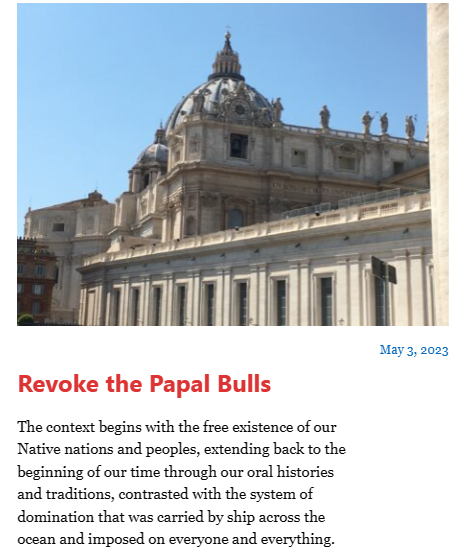
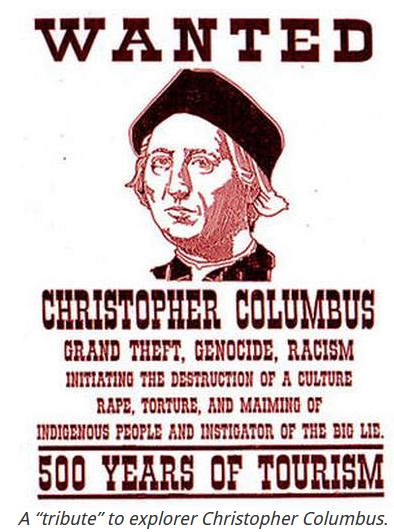
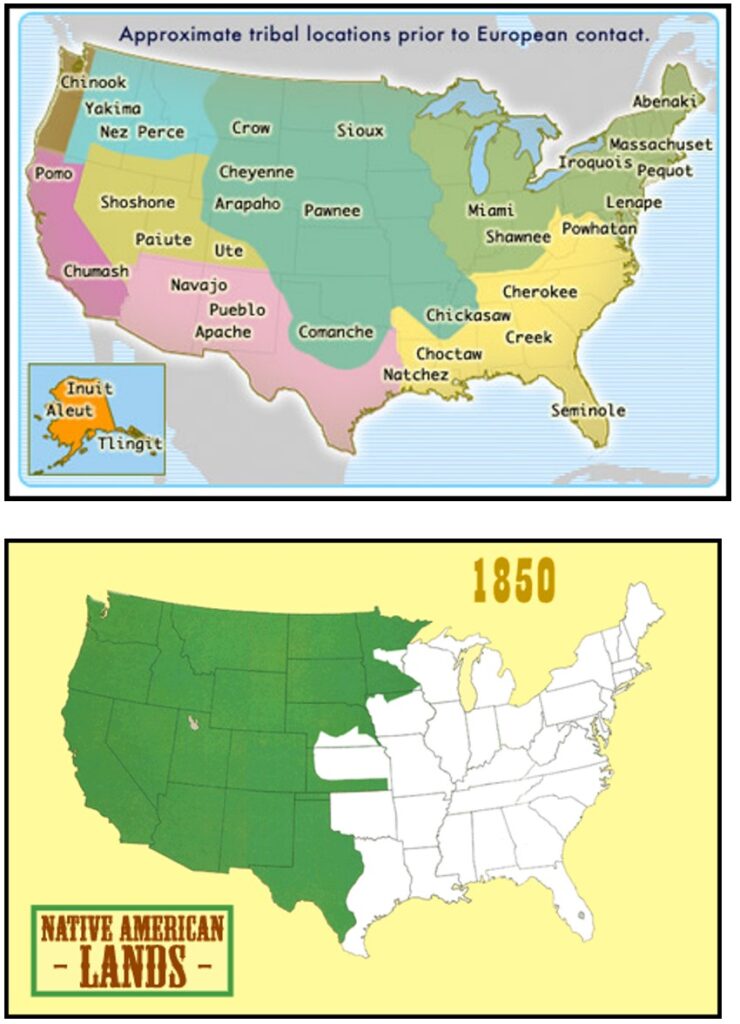
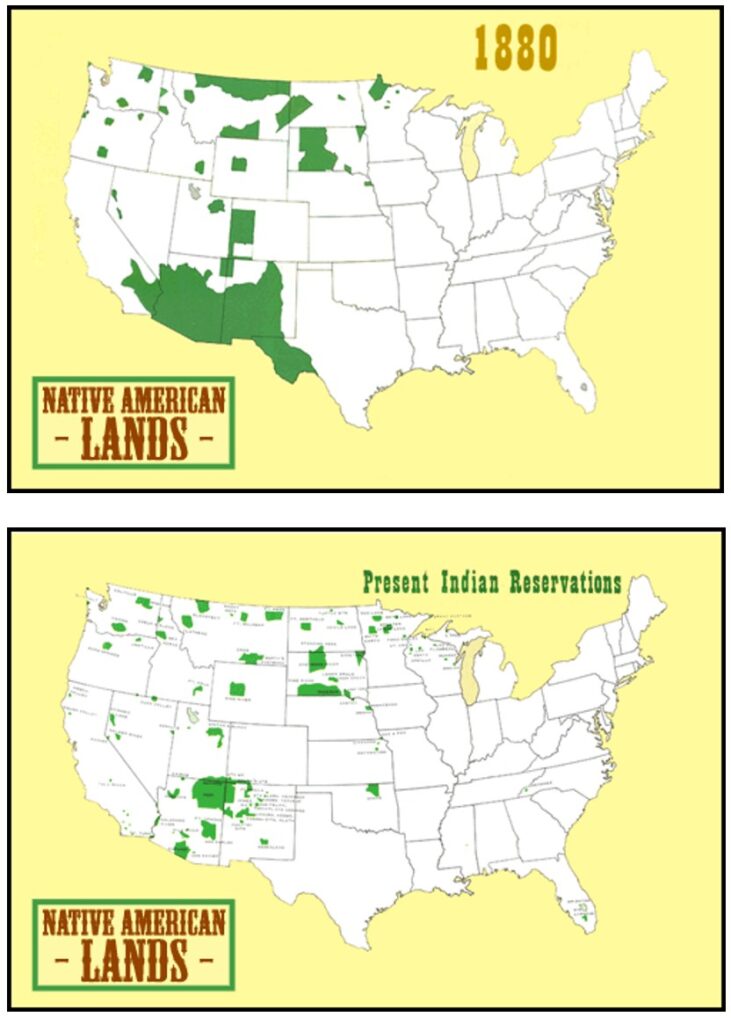
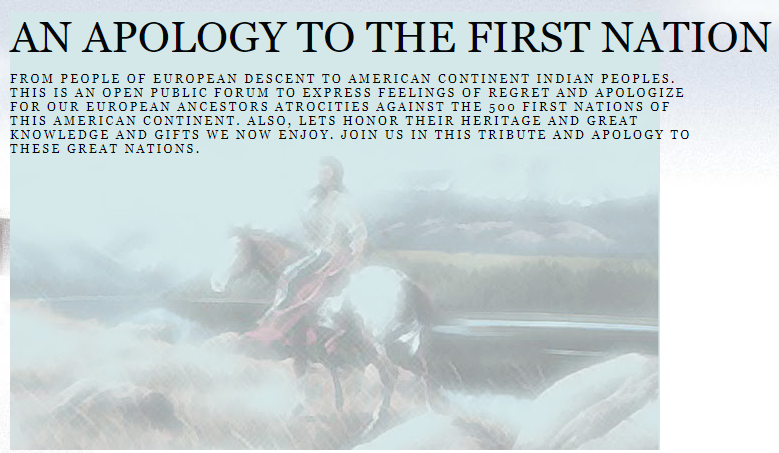
Be the first to comment on "Responses To Pope’s Repudiation of Doctrine of Discovery"